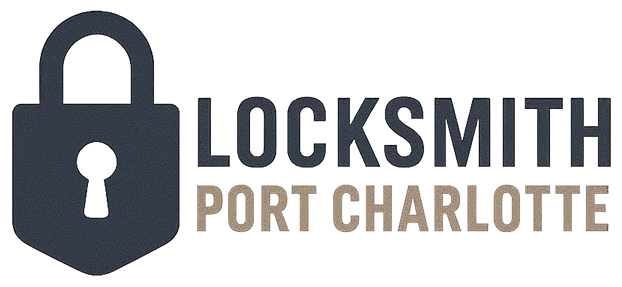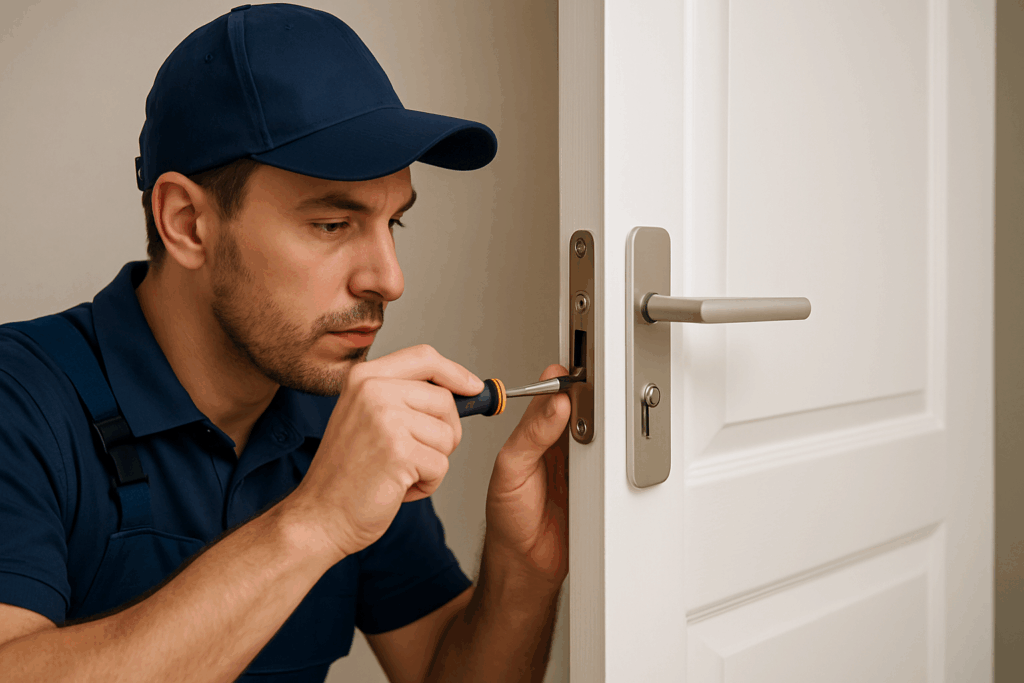Tips for Protecting Outdoor Sheds and Storage Units
Sheds and storage units hold the tools that keep life moving—mowers, bikes, power tools, seasonal gear, inventory, even sensitive documents. Because they’re often out of sight from main living areas, they’re prime targets for theft and weather damage. This guide shows how to harden the structure, control access, deter opportunists, and recover quickly if something goes wrong—without turning your yard into a fortress.
Foundation First: What “Good Security” Looks Like Outdoors
Good shed and storage-unit security is simple, durable, and boring—because boring works. Think tight door and frame tolerances, hardware that resists bolt cutters and prybars, lighting that activates when it should, and a daily habit of locking up without excuses. You don’t need complex gadgets; you need layers that fail gracefully. A quality hasp with hidden screws beats a flashy camera that loses Wi-Fi.
Start with a site survey. From the street or driveway, what would a passerby see? Is there a fence line or landscaping barrier? Where could someone hide while working on a lock? Are doors facing open views or tucked behind structures? Map these realities before you buy gear so every choice addresses an actual weakness.
Strengthen Doors, Frames, Walls, and Hinges
A lock is only as strong as what it’s mounted to. Reinforce the shell so common tools—screwdrivers, prybars, pipe wrenches—don’t defeat you in seconds.
Rigid Door & Frame
Upgrade thin, flexy doors to solid-core or steel-skin models. Add a continuous hinge or heavy-duty strap hinges with carriage bolts and locking nuts. Reinforce the latch side with a steel strike plate spanning at least two framing studs.
Hidden Fasteners
Use through-bolts and security (pin-in) Torx where exposed. Back bolts with large washers or plates so the hasp can’t rip through soft wood. Avoid wood screws on exterior hardware—they’re easy to yank.
Hinge Security Pins
If hinges are outward-facing, add hinge bolts or set screws that bind when the door is closed. That way, removing hinge pins won’t free the door.
Window Choices
If you need natural light, choose small, high windows with laminated/polycarbonate glazing. Add interior bars or a decorative grill that anchors into framing, not just trim.
Wall & Roof Anchoring
Anchor the shed to a concrete slab or ground anchors. Shear-strength tie-downs help in storms and deter quick “lift and carry” thefts of lightweight units.
Floor Security Plate
Install a recessed steel anchor point inside to chain high-value items. A secure interior anchor lets you lock valuables even if a door is forced.
Choosing Locks, Hasps, and Chains That Actually Resist Attack
Most shed break-ins are fast, loud, and crude. Choose hardware that forces time and noise.
Shrouded Padlocks
Use shrouded or closed-shackle padlocks with hardened steel bodies and boron-alloy shackles. Short shackle clearance reduces bolt-cutter bite. Weather-rated cores resist corrosion that can freeze you out.
Rated Hasps & Staples
Pair locks with heavy hasps whose staple (the loop) is fully guarded. Choose models with hidden screws and through-bolts. The hasp should be as tough as the lock.
Restricted Keyways
For shared yards or small businesses, ask a locksmith for restricted key systems that reduce unauthorized duplicates and let you track who has which key.
Hardened Chains & Cables
Inside, use 10–12 mm hardened square-link chain (harder for cutters to bite) or armored cable to lock bikes, generators, compressors to an interior anchor.
Two-Point Locking
On double doors, use a lock bar or internal rod system that secures the top and bottom. It prevents prying the free edge even if one latch is compromised.
Maintenance Matters
Quarterly: inspect for rust, lube cylinders with dry film, and replace weather seals. A seized padlock becomes a “leave it unlocked” excuse.
Fences, Sightlines, Lighting, and Natural Surveillance
Thieves prefer cover and darkness. A tidy, visible structure with predictable light cues is harder to approach unnoticed.
Trim & Tidy
Keep shrubs and stacked lumber away from doors and windows. Clear sightlines from your house or a neighbor’s kitchen window are powerful deterrents.
Motion + Ambient Light
Combine a low-watt dusk-to-dawn fixture with a brighter motion flood. The ambient glow discourages lingering; the floodlight startles activity.
Numbers & Cameras
Post address/shed unit number visibly for fast reporting. Use a camera with a narrow field aimed at the approach—not the neighbor’s yard—and set zones to avoid constant false alerts.
Gates & Latches
Self-closing gates with latches on the inside face slow access. A simple spring closer plus an interior latch buys minutes when it matters.
Rented Storage Units: Policies, Padlocks, and Paperwork
If you rent a storage unit, security is a partnership with the facility. Choose a site with controlled gate access, unique unit alarms, and interior cameras covering hallways—not just the entrance. Ask about staff presence after hours and how they handle tailgating vehicles.
Prefer roll-up doors compatible with disc locks (their circular design protects the shackle). Register who has access, and avoid leaving keys on facility grounds. Photograph your unit’s contents periodically, record serial numbers, and keep receipts for high-value items. If something goes missing, this documentation accelerates recovery and claims.
Inventory, Serial Numbers, and Covert Marking
Thieves flip tools fast. Simple prep increases your odds of recovery and helps police link items to you.
Serial Log + Photos
Track brand, model, and serial in a cloud note. Photograph each item and any unique wear. Include you holding or using the tool for provenance.
Covert ID Marks
Engrave initials where visible and add UV-ink or microdot marking in hidden areas. Covert marks support proof even if serials are removed.
Smart Tags & Sensors
Consider Bluetooth/LoRa tags on pricey, mobile items like e-bikes and generators. Hide tags inside housings; don’t advertise with flashy stickers.
Insurance Fit
Verify home/renter or business policies cover outbuildings and off-site storage. Some require named items or photos to pay out quickly.
Moisture, Heat, Pests, and Fire
Security isn’t just theft. Weather and pests quietly destroy gear—and damaged doors are easier to force.
Moisture Control
Seal roof penetrations, add drip edges, and use vapor barriers under floors. Desiccant or powered dehumidifiers protect electronics and prevent rust.
Ventilation & Heat
Install passive vents high and low; add a thermostatic fan for heat-prone sheds. Cooler interiors preserve batteries and adhesives in your locks.
Pest Exclusion
Seal gaps larger than a pencil with steel wool and caulk. Elevated shelves keep wiring and textiles off the floor—less tempting nests.
Fire Safety
Store fuels in certified cans, away from ignition sources. Keep a rated extinguisher inside the door and maintain clear egress.
Habits That Do More Than Hardware
Small routines keep protection consistent—and thieves look for inconsistency.
Lock, Every Time
Even during quick yard work. Opportunists try doors “just in case.” A no-exceptions habit ends that tactic.
Key Control
Limit who holds keys; consider a coded lockbox for family. Change codes or rekey after contractors or staff turnover.
Close & Clean
Don’t leave tools visible near the door. A tidy, closed space broadcasts “managed and monitored.”
Scheduled Checks
Weekly quick-look: hinges, hasp, lock function, lighting, camera status. Find problems before thieves do.
Context Matters: Rural, Urban, and HOA Constraints
Rural properties have space—but also time for intruders. Emphasize perimeter alarms, gates, and vehicle-visible deterrents. Urban sites should focus on sightlines, rapid response (neighbors, cameras with shareable clips), and locks that resist quick attacks. Under HOAs, follow exterior rules— choose hardware that blends in and prioritize interior anchors and discrete cameras behind glass.
Things That Make Sheds Easy Targets
Don’t undermine good hardware with easy errors. Fix these first for a big security jump.
Weak Walls Behind Strong Locks
If panels are thin OSB, a boot may bypass your fancy lock. Add interior sheathing or steel plates around the latch area.
Unlocked Daylight Hours
Daytime theft is common. Lock the shed while you’re in the front yard or on a supply run.
Overly Bright, Always-On Lights
It can advertise emptiness at 2 AM. Use motion floods and modest ambient light instead.
Cheap Magnetic Boxes
Spare keys in flimsy boxes disappear. Use restricted keys in a coded lockbox or smart access instead.
Two Quick Checklists
Use these to harden a new shed in an afternoon—or to audit an existing one.
- Hardware Solid door, continuous/strap hinges with through-bolts, guarded hasp, shrouded padlock, interior anchor point, window bars or laminated glazing.
- Ops Motion + ambient lighting, weekly lock test, inventory with serials, covert ID marks, insurance photos, tidy interior, key control policy.
Common Questions About Shed & Storage Security
Quick answers to help you choose durable, practical protection.
What lock style is best for a roll-up door?
Do cameras really help outdoors?
How do I secure bikes and mowers inside?
Is a keypad better than a key?
Want a Shed or Storage Security Upgrade Plan?
Get a quick on-site assessment: we’ll review doors, frames, locks, lighting, and inventory practices, then recommend a layered setup that fits your budget and keeps your gear where it belongs—safe and ready to use.

